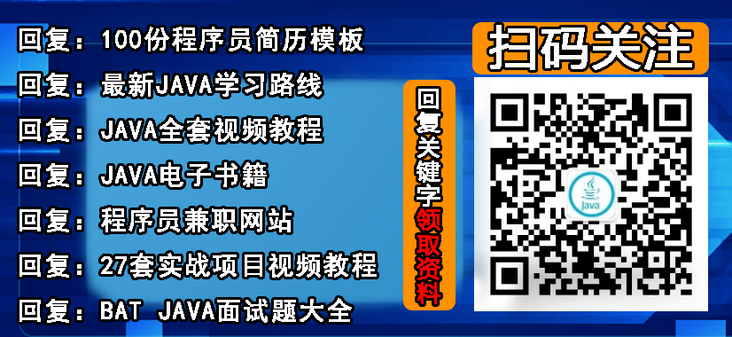
At present, the common application software has the shadow of delayed message push, which is also widely used, such as:
Taobao automatically confirms receipt within seven days. After we sign for the goods, the logistics system will delay sending a message to the payment system seven days later to inform the payment system to call the merchant. This process lasts seven days, which uses the delayed push function of message middleware.
12306 ticket purchase payment confirmation page. We often have a countdown in the page where we select the ticket and click OK to jump, which means that if the order is not confirmed within 30 minutes, the order will be cancelled automatically. In fact, when the ticket purchase business starts at the moment of placing the order, the system will send a delay message to the order system, delaying 30 minutes to tell the order system that the order has not been completed. If we complete the order within 30 minutes, we can ignore the received information through logic code judgment.
In the above two scenarios, if we use the following two traditional solutions, it will undoubtedly greatly reduce the overall performance and throughput of the system:
- Use redis to set the expiration time for the order. Finally, determine whether the order has been completed by judging whether the order still exists in redis. Compared with the delayed push of messages, the performance of this solution is lower, because we know that redis is stored in memory. When we place an order or swipe an order maliciously, it will put great pressure on the memory.
- Traditional database polling is used to judge the status of orders in database tables, which undoubtedly increases the number of IO and has very low performance.
- Using the jvm's native DelayQueue also consumes a lot of memory, and there is no persistence strategy. Order information will be lost when the system goes down or restarts.
Implementation of message delay push
Before RabbitMQ 3.6.x, we generally used dead letter queue + TTL expiration time to implement delay queue. We won't introduce it here.
Starting with RabbitMQ 3.6.x, RabbitMQ officially provides a plug-in for delay queue, which can be downloaded and placed in plugins under the root directory of RabbitMQ.

picture
First, we create the switch and message queue. The configuration in application.properties is the same as that in the previous article.
import org.springframework.amqp.core.*;
import org.springframework.context.annotation.Bean;
import org.springframework.context.annotation.Configuration;
import java.util.HashMap;
import java.util.Map;
@Configuration
public class MQConfig {
public static final String LAZY_EXCHANGE = "Ex.LazyExchange";
public static final String LAZY_QUEUE = "MQ.LazyQueue";
public static final String LAZY_KEY = "lazy.#";
@Bean
public TopicExchange lazyExchange(){
//Map<String, Object> pros = new HashMap<>();
//Set the switch to support delayed message push
//pros.put("x-delayed-message", "topic");
TopicExchange exchange = new TopicExchange(LAZY_EXCHANGE, true, false, pros);
exchange.setDelayed(true);
return exchange;
}
@Bean
public Queue lazyQueue(){
return new Queue(LAZY_QUEUE, true);
}
@Bean
public Binding lazyBinding(){
return BindingBuilder.bind(lazyQueue()).to(lazyExchange()).with(LAZY_KEY);
}
}
We can set exchange.setDelayed(true) in the declaration of Exchange to open the delay queue, or the following contents can be passed into the method of the declaration of Exchange, because the underlying of the first method is implemented in this way.
//Map<String, Object> pros = new HashMap<>();
//Set the switch to support delayed message push
//pros.put("x-delayed-message", "topic");
TopicExchange exchange = new TopicExchange(LAZY_EXCHANGE, true, false, pros);
When sending a message, we need to specify the delay push time. Here, we pass in the parameters in the method of sending the message new MessagePostProcessor() To get Message object, because you need to use The api of the message object to set the delay time.
import com.anqi.mq.config.MQConfig;
import org.springframework.amqp.AmqpException;
import org.springframework.amqp.core.Message;
import org.springframework.amqp.core.MessageDeliveryMode;
import org.springframework.amqp.core.MessagePostProcessor;
import org.springframework.amqp.rabbit.connection.CorrelationData;
import org.springframework.amqp.rabbit.core.RabbitTemplate;
import org.springframework.beans.factory.annotation.Autowired;
import org.springframework.stereotype.Component;
import java.util.Date;
@Component
public class MQSender {
@Autowired
private RabbitTemplate rabbitTemplate;
//confirmCallback returnCallback The code is omitted, please refer to the previous article
public void sendLazy(Object message){
rabbitTemplate.setMandatory(true);
rabbitTemplate.setConfirmCallback(confirmCallback);
rabbitTemplate.setReturnCallback(returnCallback);
//id + time stamp Globally unique
CorrelationData correlationData = new CorrelationData("12345678909"+new Date());
//Specify when sending a message header delay time
rabbitTemplate.convertAndSend(MQConfig.LAZY_EXCHANGE, "lazy.boot", message,
new MessagePostProcessor() {
@Override
public Message postProcessMessage(Message message) throws AmqpException {
//Set message persistence
message.getMessageProperties().setDeliveryMode(MessageDeliveryMode.PERSISTENT);
//message.getMessageProperties().setHeader("x-delay", "6000");
message.getMessageProperties().setDelay(6000);
return message;
}
}, correlationData);
}
}
We can observe setDelay(Integer i) is the underlying code, which also sets x-delay in the header. This is equivalent to setting the header manually
message.getMessageProperties().setHeader("x-delay", "6000");
/**
* Set the x-delay header.
* @param delay the delay.
* @since 1.6
*/
public void setDelay(Integer delay) {
if (delay == null || delay < 0) {
this.headers.remove(X_DELAY);
}
else {
this.headers.put(X_DELAY, delay);
}
}
Consumer side consumption
import com.rabbitmq.client.Channel;
import org.springframework.amqp.rabbit.annotation.*;
import org.springframework.amqp.support.AmqpHeaders;
import org.springframework.stereotype.Component;
import java.io.IOException;
import java.util.Map;
@Component
public class MQReceiver {
@RabbitListener(queues = "MQ.LazyQueue")
@RabbitHandler
public void onLazyMessage(Message msg, Channel channel) throws IOException{
long deliveryTag = msg.getMessageProperties().getDeliveryTag();
channel.basicAck(deliveryTag, true);
System.out.println("lazy receive " + new String(msg.getBody()));
}
```
## test result[#](https://www.cnblogs.com/haixiang/p/10966985.html#3724420099)
import org.junit.Test;
import org.junit.runner.RunWith;
import org.springframework.beans.factory.annotation.Autowired;
import org.springframework.boot.test.context.SpringBootTest;
import org.springframework.test.context.junit4.SpringRunner;
@SpringBootTest
@RunWith(SpringRunner.class)
public class MQSenderTest {
@Autowired
private MQSender mqSender;
@Test
public void sendLazy() throws Exception {
String msg = "hello spring boot";
mqSender.sendLazy(msg + ":");
}
}
Sure enough, I received the message six seconds later `lazy receive hello spring boot:`